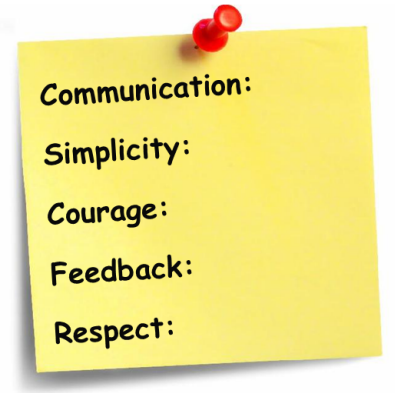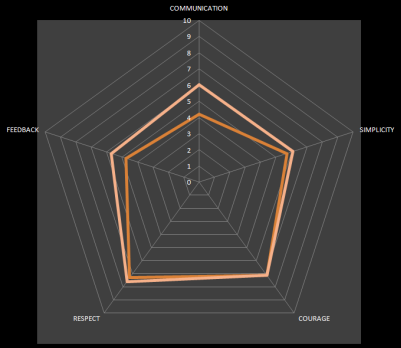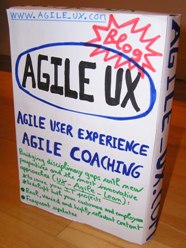Agile Coaching Tips: Reinforce your agility with the Agile Team Radar
TweeterPosted by jc-Qualitystreet on 2010/10/19
The « AGILE TEAM RADAR » is a self assessment tool I like to propose during sprints retrospective to collect data, especially with teams new to agility.
The exercise is directly inspired by Diana Larsen and Ester Derby (Agile retrospectives)
The problem
Teams don’t always understand the importance of agile values, and don’t perceive how they are intimately linked to their everyday practices.
« Thanks for the theory… Ok for the values but now… please tell me more about continuous integration test automation and agile requirements »
An answer
The necessity and the opportunity to return to foundations again and again! A good way to start: the agile team Radar with its good focus on the core agile (actually XP) values !
How to proceed?
Step 1: Introduce the activity (why, how… self assessment, collect data, measure progress ….)
Step 2: Write, introduce values to the team making a short description of each value and trying to connect them with everyday practices. Good definitions to start:
Communication: Everyone is part of the team and we communicate face to face daily. We will work together on everything from requirements to code. We will create the best solution to our problem that we can together
Simplicity: We will do what is needed and asked for, but no more. This will maximize the value created for the investment made to date. We will take small simple steps to our goal and mitigate failures as they happen. We will create something we are proud of and maintain it long term for reasonable costs
Courage: We will tell the truth about progress and estimates. We don’t document excuses for failure because we plan to succeed. We don’t fear anything because no one ever works alone. We will adapt to changes when ever they happen.
Respect: Everyone gives and feels the respect they deserve as a valued team member. Everyone contributes value even if it’s simply enthusiasm. Developers respect the expertise of the customers and vice versa. Management respects our right to accept responsibility and receive authority over our own work
Feedback: We will take every iteration commitment seriously by delivering working software. We demonstrate our software early and often then listen carefully and make any changes needed. We will talk about the project and adapt our process to it, not the other way around
Step 3: Let the team make it real and link these values to their current practices… Let the discussion go !
Step 4 : Do the self assessment, anonymously, with a scale of 0-10 : how well the team is doing with the 5 agile values ?
Step 5: Collect the cards immediately after the exercise, Do the average by axis
Step 6: : Discuss the results and use it to track progress: NEXT SPRINT WE FOCUS ON FEEDBACK !
Benefits
- Precious to reinforce agile values
- Very useful to generate insights and discussion around practices / values
- Quick and easy
- Useful to identity strengths and weaknesses of a team in a « Kaizen » approach
- Very good for retrospectives and intresting in training and everyday coaching





Cathy said,
The points you mentioned are very important & good. But the problem is it’s hard to implement. E.g. Let take points « courage » and « respect ». These are very qualitative, and it’s very easy to fudge.